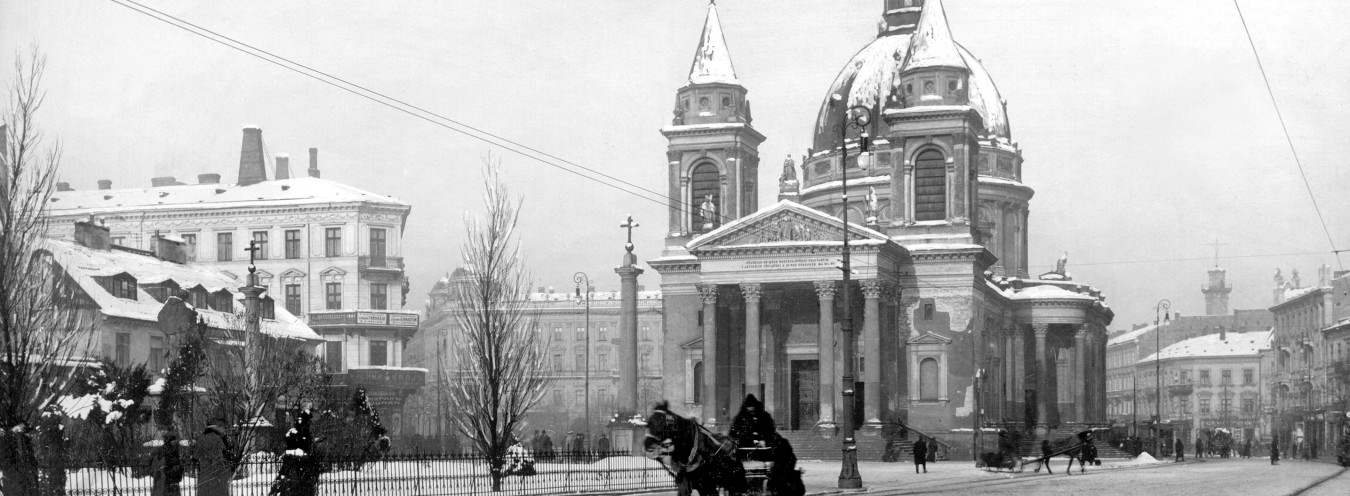
Russians in Warsaw
[Figure courtesy of the Warsaw Public Library – Central Library of the Masovian Province]
The realistic representation of the 1880s’ Warsaw in The Doll is sometimes compared by critics to a carefully retouched photograph. Despite the author’s meticulous attention to facts, the novel seems to deliberately omit a vast number of details that could be connected with the Russian occupier.
The novel’s only character who is referred to as a “Muscovite” is Suzin, Wokulski’s hearty friend and fellow-tradesman. However, at the time in which The Doll was written, approximately 3 percent of Warsaw’s population consisted of Russians, not counting military troops stationed in the city. It is telling that references made to a general encountered by Wokulski at Countess Karolowa’s on Easter Sunday do not include any further details on the army he serves. Officials, students and pupils were made to wear Russian-style uniforms. The occupying authorities paid particular attention to the railway system: it was staffed exclusively by Russians and train timetables were printed only in Russian to make passengers feel they are part of the Russian Empire.
Warsaw architecture is given the same vague treatment, full of omissions and understatements. The novel’s characters attend Roman Catholic churches, but there is no mention of even one of the city’s dozen or so Eastern Orthodox churches that must have held daily services and pealed their bells (e.g., the cathedral and church in Długa Street, churches in Miodowa Street and in Podwale). Furthermore, the novel touches upon Polish statues and monuments, but ostentatiously does not bring up the Russian ones even though they were numerous and placed in the city’s most representative locations (e.g., the statue of Catherine the Great in the Belvedere Garden, and of Ivan Paskevich in front of his former residence, today’s Presidential Palace). During his walk along the prestigious Krakowskie Przedmieście, Wokulski stops short before reaching the Royal Castle, then the seat of the Russian governor and home to army barracks in the front wing. If it were not for censorship, the protagonist would not fail to observe the façade of Staszic Palace while looking out of his windows (the building was uglified with Byzantine-style motifs by the Russian superintendent Alexander Apukthin, and these “ornaments” were pitilessly mocked by Varsovians as colourful towels hung out to dry). In his descriptions of shop window displays, the author does not comment on the gaudy shades of shop signs that were officially imposed to replace the black-and-white colour scheme of the Polish national mourning period. Neither does he mention the fact that shop names needed to be written in Russian, or at least in both Polish and Russian, and that officials made sure the Polish letters were not larger than the Cyrillic.
The Russian language is absent from The Doll. Russian-sounding phrases come only from actual Russians such as Suzin or prikashchiki, shop assistants brought from Moscow by Mr Mraczewski. Some specific pronunciation characteristics and sentence structures can be found during the trial over little Helena’s doll in the judge’s way of speaking, which would immediately tip Prus’s contemporary readers off as to his nationality. Russian was the official and obligatory language in Warsaw’s streets, institutions and schools. The use of Polish was basically allowed only in the theatre and the church, but definitely not at court, where cases were tried in Russian and those who did not speak the language had to be accompanied by an assigned translator.
The Julian calendar, which was re-introduced by the Russian authorities, is consistently ignored by the novel’s characters. However, in reality, official announcements and the press had to use both dating systems – the new Gregorian calendar adopted in European countries, and the pre-Gregorian, Julian calendar still used in Russia; in 1878, the difference between them was 12 days. The exceptionally numerous Eastern Orthodox and Russian state holidays were celebrated publicly as days off from school and work. On such occasions, Poles were required to attend Eastern Orthodox services, hang out Russian flags, and illuminate the streets with glary lights (even the gutters had candles that were arranged to form the initials of ruling family members). There were approximately 50 holidays of this sort per year, and not even one is mentioned by Prus in the novel that covers the period of almost two years.
Russian inhabitants of Warsaw formed a rather closed circle and rarely socialised with Poles. They had their own clubs and associations (such as the Russian Charitable Society, founded in 1866). The “neutral ground” where Poles and Russians could rub shoulders, as approved on both sides, was the theatre, horse-race courses (sometimes frowned upon for this very reason), and the Hunting Club.
The conspicuous absence of references to the Russian world in The Doll was part of a more general response of Polish writers and journalists to the Tsarist ban on using the term “Poland” in Russian-language publications; from the 1870s onwards, the only allowed names were Privislinia or Privislinsky Krai (Vistula Land). This is as a result of the agreement among Polish intellectuals to deliberately avoid any mention of the Tsarist system that Prus’s realist novel does not describe many aspects of everyday life in a city under Russian occupation.
→ Censorship; → Aesopian language; → Statues and Monuments; → Russia; → Suzin;
Bibliografia
- A. Zaleski, Towarzystwo warszawskie. Listy do przyjaciółki przez baronową XYZ, Warsaw 1971.
- A. Tuszyńska, Rosjanie w Warszawie, Warsaw 1992.


